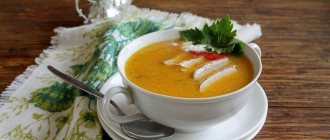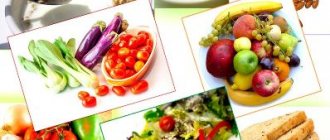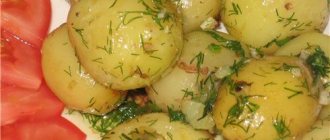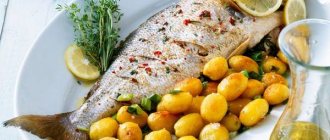Famous nutritionists, developing the next technique, are trying to insert psychological subtext into it to make it easier to tolerate restrictions. But the real support for slimming people was the suggestion to keep a weight loss diary. So the result is before your eyes, and the incentive. This allowed me to look at myself from the outside. There is an opportunity to evaluate your efforts or laziness.
What is a food diary
For those who have not encountered this before, keeping records of what and when you ate is unusual and somewhat strange. However, there is nothing unusual about this. A nutrition and training diary is an indispensable thing for athletes training in the gym for results. After all, to achieve an ideal figure, you need to consider how much you eat and what exactly. And how to do it? - Only by writing down what you eat during the day in a notebook. Then you can analyze this data and understand whether you are doing everything correctly and whether you need to remove something from your diet or, perhaps, add it. Therefore, a diet diary for losing weight should definitely become one of your main “accessories”.
A proper nutrition diary for weight loss allows you to find out the following:
- how much or little you eat in a day;
- how many calories do you consume;
- Do you have a balanced amount of proteins, fats and carbohydrates (BJU).
In addition, this is another way to combat the desire to eat something harmful. You probably don’t want to write down a high-calorie piece of cake in your notebook, do you?
How to keep a food diary: personal experience and 10 tips
Anna Zabolotnaya
April 6, 2010
A year ago, when I gained 15 kilograms, I kept a food diary for three months, every day. Now, if I feel that I am falling out of my usual eating schedule, I just need to monitor myself for a week. I learned all too well the basic principles: 1. Start simple.
.
Our website has a tool for keeping a very detailed diary: displaying calorie content and exact portion sizes, calculating the content of proteins, fats and carbohydrates. When I was keeping track of mine, I additionally tracked magnesium, calcium and iodine - I wanted to show the data to the doctor so that he could advise me on vitamins. But starting with such detail means ruining the idea in the bud. For the first week, write down everything you eat schematically. If you have Twitter, you already know how to formulate any sentences no more than 140 characters long. By the way, for such short posts we created the hashtag #daily_food. Don't have an account? Practice - everyone will have time to write one paragraph a day. For the same purposes, you can use the “Status” column in your personal account on Takzdorovo.ru, available after registration: a maximum of 300 characters can be placed here. 2. Take pictures of the labels
of what you eat with your mobile phone or a point-and-shoot camera—it’s easier to figure out calories and sugar content at home than on the go or in the cafeteria.
There you can also understand the serving size and finally correctly interpret a label like “low-calorie dessert” (yes, if you eat only five gummy bears!). I spent the whole day clicking all the dishes and packages, and in the evening I sorted through the folder of mobile photos and kept a diary. Colleagues quickly got used to it, if anything. To make it more pleasant to photograph, the food was served “like on Western Flickr.” 3. Buy a home electronic scale
and weigh everything you can get your hands on for a week.
Only you need culinary ones - those that indicate weight with an accuracy of 5 grams (you can check the accuracy right in the store with a couple of coins). This is another way to begin to properly evaluate the volume of what you eat, drink, and how much oil you actually use. It is better if the scales have a “zero tare” function - then you can consistently calculate the weight of all salad ingredients one by one. The second most important purchase is measuring spoons. Consider refueling only with them. 4. If you are not very comfortable counting what you eat in grams, focus on portions
.
This will make it easier to remember the amount you ate. Just keep in mind that not everything that is brought to you on a plate is one serving. In cookbooks their sizes are usually much more realistic. Knowing the ratios is also useful in order to correctly read packages, which often indicate calorie content not per 100 g, but per serving. So, a portion of rice or pasta is the size of a cell phone. Bread - with a metro pass (this is exactly 30 g). A serving of an apple or orange is the size of a tennis ball. The recommended cup of green salad for lunch is the size of a man's fist. 100 grams of meat - a pack of paper napkins or a pack of cigarettes (ask your colleagues to compare). A tablespoon of oil is a tea bag. 50 grams of cheese - a piece as long and thick as a battery. A teaspoon of dressing - from the knuckle of your thumb. A scoop of ice cream is a tennis ball. Yes, you can eat this. You are simply very spoiled by the portion sizes in fast foods and corporate cafeterias - and in fact, what they bring you in expensive restaurants (when you are outraged by the bill) is a normal portion. 5. What you drink also needs to be written down
- first in cups, then, when you learn to determine portions and weight, in milliliters.
Everyone remembers the “two liters of water a day” rule, and it’s useful to calculate how many “modest cups of espresso” you actually drink during an average working day, and whether they turn into a large pot of coffee. 6. Small sweets at the reception. Pieces from a shared chocolate bar in the office. What you ate the night after you wrote it in your diary. French fries stolen from a tray at the checkout while the cashier was punching your friends' orders. All this also counts
.
The next, highest stage of detailed reporting is to write not only what you ate, but also why you did it. Experience shows that hunger will come last. Well, remember the simple “apple test”: “ask yourself, do you want to eat an apple right now? If the answer is “No,” then you eat not because you are hungry, but out of inertia, out of boredom or for company.” 7. Behave the same way in restaurants
.
In most cases, after the name of the dish its composition is indicated. If in doubt, you can ask for a detailed menu with calorie content and the exact weight of the products “at the exit” - it is required to be provided in every catering establishment. True, this is where your companions will definitely start looking at you askance. To control at least the volume of “harmful” elements, ask to bring sour cream, crackers, butter, dressing, jam in a separate saucepan, and check point 4. 8. Keep a recording tool at hand
.
As you already understood, I never went anywhere without a mobile phone. If you are not so fond of typing text, attach a tiny notepad and pencil to what you always have with you - your keys, your phone, your wallet. You can write on the back of unnecessary business cards (I asked secretaries for business cards of retired employees - cynical, but useful) and tickets for public transport, inserting them into the license window in your wallet. All this is needed in order to remember what you eat right away. It is very important. 9. Use a food journal as a habit-forming tool
.
When starting a report, write down in the morning: “apple”, “liter of water”, “vitamins” - then every time you open your notebook to make a new entry, you will come across this reminder. 10. Turn the power of social media to your advantage
. I know girls who abstained from tiramisu only because they would be “ashamed of their notebook.” If your empathy level is not that high, write blog posts “for friends only” or use our hashtag from the first point. You are wrong to think that this is not interesting - people love to discuss other people's food systems, breakfasts and - especially - little sins.
Tags:
- Diets
- Diet
- 10 ways
- Testing
How to keep a diary
If you've never tracked what you eat before, keeping records may seem daunting. But everything will most likely turn out to be simpler than it seems, especially if you can find and download it here.
However, you can create a food diary yourself, leaving in it those items from the examples that you need. But there are some general rules on how to conduct it correctly - they will suit everyone, regardless of the purpose of such control over what is eaten.
So, how to keep a food diary:
- Always write foods or dishes in a column - and in the adjacent column indicate their quantity in grams;
- a separate column is the number of calories eaten;
- for each dish or product the amount of fats, proteins and carbohydrates is indicated;
- You also need to record your meal times to understand how regularly you eat and how this affects your well-being;
- if you have diabetes, be sure to indicate the glycemic index of the dish or product;
- Write down what you eat immediately after lunch or dinner, not in the evening before bed.
Such a diary for every day should become a habit - that is, you need to fill it out every day, and not try to “remember everything” once a week. The concept “I keep a diary” implies the regularity and daily occurrence of such entries.
Why keep a food diary? What does this give?
With regular entries, you can identify very important things that will help you achieve your goal and maintain results. For example, you will learn:
- Why you can't lose weight
- Why are you gaining weight?
- What products are dominant on your menu?
- What you need to adjust in your diet to lose weight
- How many times a day do you eat and in what quantities?
- How many calories do you consume as usual?
- What effect do certain foods have on your body?
Thus, we can say that a food diary is a fundamental tool on the path to normal weight and a slim figure.
Paper diary
You can just buy a regular notebook or notepad and write down in detail everything about what you eat. In general, this is one of the most popular methods - even though technology has already stepped far forward. Moreover, many people are more accustomed to handwritten notes rather than their electronic version. For “moral” support, you can buy Koroleva’s book about proper nutrition and control over it.
Advantages of the method:
- simplicity and speed of filling;
- you can make notes in the margins throughout the day;
- This weight loss diary does not need to be charged, unlike a smartphone.
Minuses:
- you need to take it with you, and this is additional space in your bag;
- Difficulty with counting calories – it’s easier to do this online, because everything is calculated automatically;
- there is a risk that the pen will run out of paste at the wrong time.
You can keep notes in a regular notebook, or you can buy a special training diary - it is suitable for monitoring what you eat and training. You can also download free sample food journals to organize yours according to a specific pattern.
Motivation
The main motive for acquiring attractive forms are everyday little things. The primary factor is health. It is no secret that excess weight negatively affects the functioning of internal organs and systems: shortness of breath, disruptions in the functioning of the cardiovascular system, varicose veins and many other troubles.
The pleasure of one's own reflection in the mirror. Humans are psychophysiological by nature, and psychological discomfort affects health. Constant dissatisfaction with one's own body leads to decreased self-esteem and feelings of guilt after eating. As a result, emotional stability and overall health suffer.
Beautiful clothes. Who doesn't want to look good? If you are overweight, this is certainly possible, but it takes a lot of effort. A toned, sophisticated body is already attractive in itself. The attention of others, admiration for oneself and the results of one’s own work is what becomes the key to successful weight loss.
Editor's choice: How to choose a hot tub for your home
A food diary in itself is a great incentive to achieve results. You can start it with a description of the parameters for today, and indicate the desired result below. Attach a photo and follow the changes gradually adding new ones, comparing the results. This method will help you set clear goals and visually monitor your achievements.
Help me come up with a name for my weight loss diary
Products and Services Gift ideas. Home Appliances. Other manufactured goods. Service, care and repair. Other services. Leisure, Entertainment Hobbies. Concerts, Exhibitions, Performances. Hunting and fishing. Clubs, Discos.
Popular diets
Restaurants, Cafes, Bars. Tips, Ideas. Games without a computer. Other entertainment. New Year. Valentine's Day.
What is a weight loss diary
March 8. Science, Technology, Languages Humanities.
Natural Sciences. Jobs, Career Resume writing. Part-time work, temporary work. Recruitment agencies. Personnel department, HR. Professional growth. Most of the time, people fail to achieve their weight loss goals. They begin to lose weight, lose kg, rejoice at the first result and relax.
Then they gain weight again.
Stroking the waist and pelvic bones. Admire the fragile stick-like legs and expressive collarbones. And there are hundreds of such groups.
At the first difficulties they give up and everything returns to normal. Our task is to act wisely and not be like everyone else. Therefore, even before you start losing weight, you need to patiently analyze your actions, find mistakes and correct them. For the first time, a food diary will replace your nutritionist; you will look at your nutrition from the outside and perhaps immediately find your mistakes. In any case, it is the food diary that will open your eyes to the source of your extra pounds.
Teaches discipline and self-analysis. After you fill out the food diary template, move on to the next step - analyzing the information. After all, proper nutrition is too comprehensive a concept.
A good help for those who watch their figure is a weight loss diary, designed to monitor changes in weight, diet, and daily routine. Daily entries will help you lose extra pounds faster, evaluate your efforts, and not give in to numerous temptations. There are several rules for keeping records that will help you achieve your goal faster. There are also different types of diaries, which helps you choose the best one.
A food diary is necessary for people who are overweight and for people who want to gain weight and build muscle mass. If you are gaining extra pounds, then there are certain reasons for this, and most likely they lie in poor nutrition and excess calories.
If your goal is not to lose weight, but to build muscle mass, then with the help of a food diary you will gain a beautiful, toned, sculpted body. The main function of a food diary is to show you exactly what foods you ate during the day. And then, when you write down everything you ate, indicating the time, it can easily be converted into calories. This will help you control your weight and maintain your diet. After all, it’s quite difficult to understand right off the bat whether you’re eating right or not.
We suggest a team name! Stomp less, stomp more, sounds more like a motto. There is still time to choose, so let’s take an active part in the life of the team!!!!! We are still small, we are called “clouds”. To be honest, I like the name most of all - Stomp less, stomp more!!!!
You may think that you eat nothing or little during the day, but you gain extra weight. She always believed that she eats well, correctly, does not overeat, watches her diet and even drinks herbal infusions instead of tea. Where does the extra weight come from? I'm shocked, I didn't think I was eating so much. Another salad of tomatoes, cucumber, green pepper and herbs with sour cream, about half a kilo. Just a shock! Dear friends, this is a story from my practice, it shows how people are mistaken when they say that they eat right, but the weight does not go away.
Weight goes off only when nutrition is under control, and for this you need a food diary. Once you start filling out a food diary template, from the very first days you will learn not only how much or little you eat, but also whether you maintain a balance in the amount of proteins, fats and carbohydrates. Do you want to lose weight quickly at home?
Don't know where to start? Take the free test and in 5 minutes find out where to start losing weight for you:. In it you enter all the food that your body received throughout the day, and expenses are not what you thought about, but any physical activity - walking, training.
You act as your accountant and keep records.
Only instead of accounting transactions you will have the names of products, and instead of monetary amounts - the number of KBJU calories, proteins, fats and carbohydrates. Now we have reached the most practical section - how to keep a food diary effectively.
I will tell you how my clients keep a food diary, give a link to a food diary template in excel format and tell you how you can improve it.
If you have never kept a food diary, at first you may find this a little strange and time-consuming process, but I will tell you how to do it easier and not spend a lot of time and effort on keeping a diary.
The main thing is to understand that now you want to analyze your current situation.
Rules for keeping a diary
Nutritionists identify several stages of how to keep a weight loss diary. The weighing result is of primary importance. Every morning or evening, the indicators should be noted in the “Weight today” column. Meals are also recorded: the composition of the dish, the calorie content of the food, the time of consumption. To make calorie counting easier, you can insert a table in your diary with food data, glycemic index indicators, energy expenditure and calories from exercise.
An example of an interesting and functional weight loss diary, which is easy to make with your own hands, can be seen in the video:
There is no need to hide mistakes from yourself. For example, they treated me to chocolate and I couldn’t resist. It is worth recording this information in your diary. This will help you clearly see the flaws and their impact on the weight loss process.
At the end of the day, you can summarize: what was eaten and how many calories it was, how much water was drunk, how much energy was spent per day, exercise. This approach helps to see how close the person losing weight is to the recommended intake and energy expenditure.
Editor's choice: How to choose a wedding color depending on the time of year
The expended forces reflected on paper will help and prevent possible breakdowns. After all, having put in so much effort, no one wants to devalue them.
Online diaries
ideal weight app
It has become very convenient to use online diaries, which are always at hand. At the same time, you do not need to carry a notebook with you and make notes with your own hand in the most inconvenient places during walks, weekends, and business trips. Just download the app to your phone.
When you go to have lunch or a snack in a cafe, you can use an online diary to calculate the calorie content of your meals and prevent overeating.
The diary will become a reliable companion where you can add impressions, interesting recipes and recommendations, as well as record your well-being.
Popular and most convenient diaries:
- Diary of a losing weight mom:
- Includes suggestions for diets that promote weight loss after childbirth.
- Clear distinctions between permitted and prohibited foods.
- Information on the correct composition of the diet, without affecting the quality of breast milk.
- Forum, blogs.
- ABC of diets:
- selection of diets;
- calorie calculation;
- Information support;
- automatic calculation of results;
- forum, blogs;
- recommendation for additional methods;
- Calorie counter “Ideal weight”:
- Choosing an effective diet.
- Calculation of calories of dishes.
- Taking into account the rhythm of life and recommended daily caloric intake.
- Daily entries with automatic calculation of results.
- Recommendations for the use of cosmetics.
- Vitamin support, list of vitamin complexes.
- Exercise stress.
- Tips for bodybuilders.
- Articles, forum, myths and advice.
Functions of online diaries:
- Contains all individual data with periodic updates.
- Displays meals, physical activity, drinking regime.
- in a separate block .
- The calorie content of food and the composition of fats/proteins/carbohydrates are automatically calculated
- Records the dynamics of weight loss and physical activity.
- It gives you the opportunity to communicate with like-minded people and meet interesting people.
- The program can be downloaded to your phone and you always have access to a diary to record your well-being and mood.










